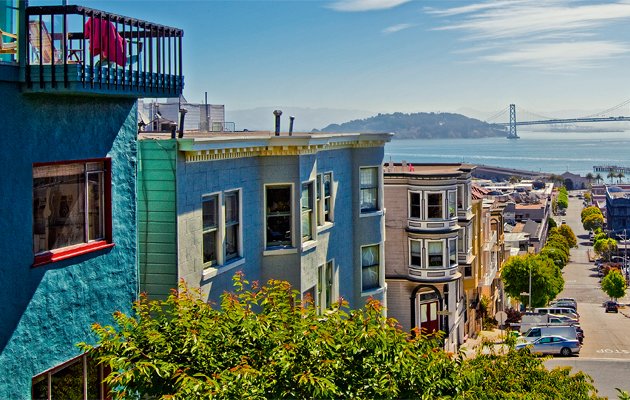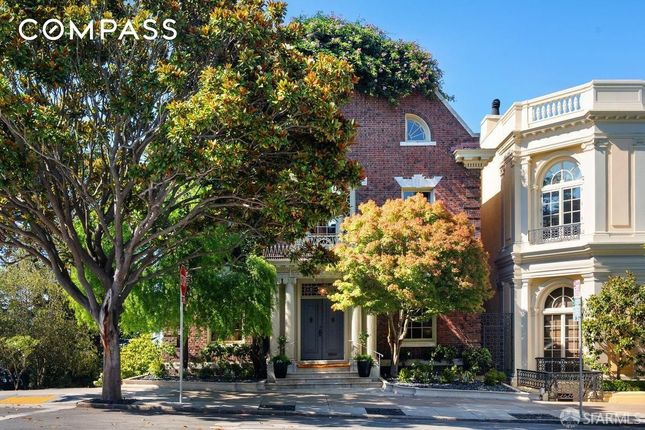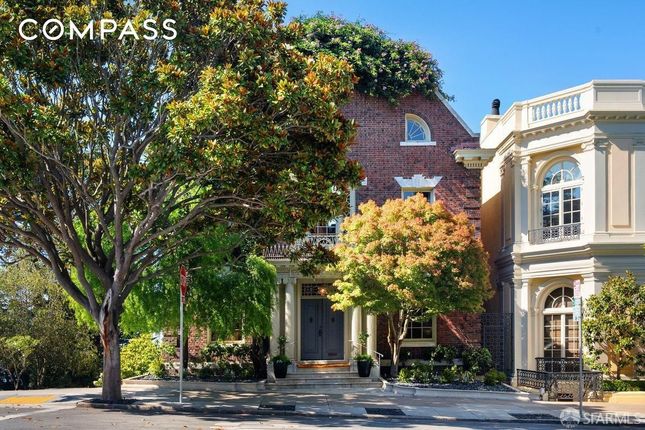Nestled within a vibrant urban landscape, San Francisco boasts the majestic Golden Gate Bridge, a sprawling Chinatown, and a thriving tech industry. Yet, alongside its bustling energy, the city holds the distinction of having one of the nation’s most costly housing markets. As of February,2024 the median home sale price soared to a staggering $1.35 million, as reported by Redfin.
Do you possess the financial means to secure a residence here? If affirmative, here’s a guide to maneuvering through the intricate process of purchasing property in San Francisco.
Choosing a residence in San Francisco

Geographically speaking, San Francisco is only 47 square miles, yet it feels like a much larger metropolis. However, there are several distinct neighborhoods and communities inside its borders, each with its own offerings, culture, and special qualities. Noe Valley, Nob Hill, and the Mission District are some of the city’s most well-liked areas.
Regardless of which neighborhood you like, the cost of living will most likely be high. According to RentCafe, San Francisco costs 28% more than the rest of California and 79% more than the national average. According to data from the California Association of Realtors, property prices in the Bay Area are far and away the most expensive in the state, even surpassing Los Angeles.
How to Buy a House in San Francisco?

Almost everything in San Francisco is likely to be expensive, including the average down payment on a home. Of all, down payment levels are a percentage of the home’s price, so it seems to reason that the usual down payment in this costly city would be significantly greater than national norms.
According to a Redfin analysis from 2024, San Francisco has the highest down payment percentage in the country, at 25%. Using March’s median home price of $1.35 million, the normal down payment is more than $337,000. The average down payment nationwide was $42,000, according to the survey.
However, you may not have to pay a large sum of money up front. Most house loans do not need a 25% down payment. In addition, California has various homebuyer aid programs that can help with down payments and other expenditures related to the purchase.
Get preapproved for a mortgage
Obtaining mortgage approval is an important first step in the homebuying process. This lets a lender take an initial look at your financial situation and estimate how much they are likely to grant you, giving you a home-buying budget. Obtaining pre-approval also lets sellers know that you are a serious and qualified buyer.
Find the appropriate lender

Finding the best lender for your financial requirements and goals needs some study and shopping around. It’s a good idea to compare numerous California lenders and contrast their loan terms and rates. Some lenders may even provide low-down payment options or down payment assistance programs. Remember that the higher your credit score, the better interest rate you’re likely to qualify for.
Find the best local real estate agents in San Francisco.
Working with a professional realtor who is familiar with your search region can help reduce stress during the homebuying process in a competitive market like San Francisco. An experienced local realtor can recommend the best San Francisco areas for your budget and lifestyle, advise you on how much to offer on a home, and help you navigate potential bidding wars or price negotiations.
When looking for an agent, ask friends, family, and even coworkers for referrals if they have had a positive experience with a realtor. It’s also a good idea to interview multiple individuals to ensure you discover someone with whom you can easily speak. Before making a decision, read internet reviews of the agents you’re considering.
Begin house-hunting and make an offer
With your pre-approval in hand and your agent by your side, it’s time to begin looking at homes. In addition to finding homes within your budget, look into the neighborhoods that best suit your lifestyle. It’s also a good idea to make a list of non-negotiable must-haves in a property as opposed to things that would be wonderful to have.
When you locate a home you love, collaborate with your Realtor to make the best offer possible. However, keep in mind that even in this highly competitive market, conditions are becoming marginally more favorable to buyers.
According to Redfin, San Francisco listings are currently on the market for an average of 29 days, nearly doubling the 15-day average from this time last year. In addition, approximately 14% of listings reduced their asking price before selling.
Schedule a home inspection and appraisal

Even when a seller accepts your offer and you sign a purchase agreement, you are not assured to reach the closing table. The property will then be inspected and evaluated as part of the evaluation process.
Home inspections verify that there are no major or unanticipated issues with the property that could be costly or influence your choice to proceed. This stage is technically optional, but when considering a large purchase like a home, it’s wise to do your research.
Appraisals ensure that the property’s value matches the amount you are borrowing from a mortgage provider. This phase is needed by lenders and entails a professional visiting the residence to assess its condition. To determine the home’s market value, an appraiser will compare it to other similar properties in the region that have previously sold.
First-time homebuyers.
While a first-time homeowner is typically someone who has never purchased a home before, the term can also apply more broadly. Individuals who have not owned a property in the previous three years are also classified as first-time purchasers by the California Housing Finance Agency (CalHFA).
This distinction may help you qualify for down payment or closing cost assistance programs. CalHFA provides a variety of programs to assist first-time homebuyers, particularly those with low or moderate income. Some mortgage providers may even provide slightly lower rates to first-time buyers.
Final Words
Closing marks the end of the lengthy home-buying process. At the closing table, you’ll sign a slew of paperwork to complete the transaction, pay closing costs, and gain legal possession of your new house. According to CoreLogic’s ClosingCorp, closing costs in California average around 1% of the transaction price.
However, the amount of your closing expenses may vary. When it’s all finished, you’ll receive the keys and become an official San Francisco homeowner.
